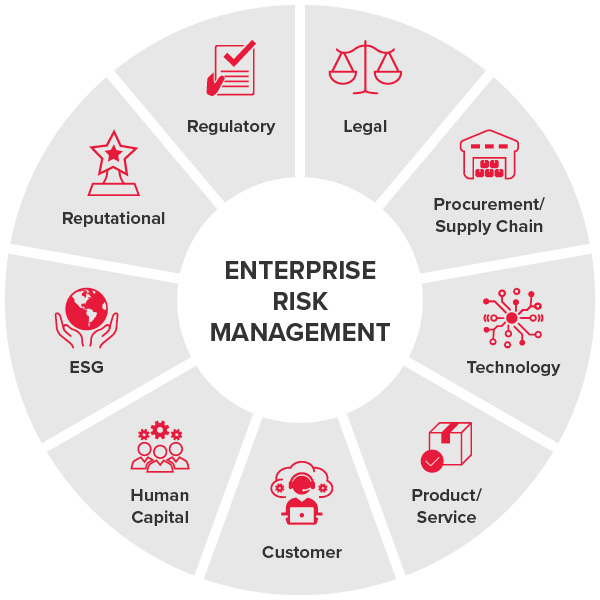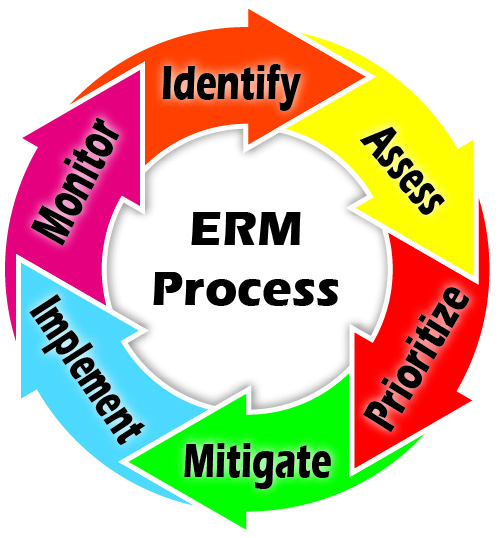Discover the Role of AI in Encouraging Ethics and Honesty to Fight Insider Threats Successfully
The integration of AI in organizational frameworks has actually become critical in attending to expert threats. By utilizing sophisticated analytics and real-time surveillance, AI systems can identify variances from moral actions amongst employees (Insider threats). This aggressive technique not only improves conformity yet additionally fosters an atmosphere of depend on. As firms significantly depend on these innovations, concerns occur regarding their performance and possible effects for workplace society. What exists ahead in the evolution of AI's role in advertising honesty?
Understanding Insider Hazards and Their Effect On Organizations
Organizations commonly focus on external hazards, expert dangers present a significant risk that can undermine security and honesty. These risks emerge from individuals within the company, such as service providers or workers, that may abuse their accessibility to sensitive information for individual gain or harmful intent. The effect of expert dangers can be severe, leading to economic losses, reputational damage, and legal implications.
Aspects adding to insider threats consist of dissatisfaction with the office, absence of oversight, and insufficient employee training on safety protocols. Organizations typically struggle to recognize these threats, as they can be hard to identify up until substantial damage has actually happened. Avoidance techniques need to focus on cultivating a culture of depend on and accountability, alongside carrying out durable tracking and reporting systems. By identifying and attending to the intricacies of insider risks, companies can enhance their safety stance and safeguard their beneficial possessions from interior threats.
The Evolution of AI in Office Security
As organizations progressively face varied security difficulties, the combination of fabricated intelligence (AI) in workplace safety and security has actually advanced considerably. AI applications concentrated largely on automating basic security protocols, such as gain access to control and monitoring. Advancements in maker knowing and data analytics have actually changed AI right into a positive device capable of determining prospective hazards and vulnerabilities in real-time.
Organizations currently utilize AI-driven systems to assess large amounts of data, allowing them to discover anomalous behavior that might indicate expert dangers. This development has actually resulted in the development of innovative formulas that can gain from historical incidents, improving the system's predictive capabilities. Additionally, AI tools are significantly utilized to improve incident action procedures, permitting safety teams to act promptly and effectively.
Just How AI Monitors Employee Actions for Ethical Compliance
Fabricated knowledge plays a vital duty in monitoring staff member behavior to assure ethical compliance within companies. AI systems evaluate substantial amounts of data generated by staff members, including communications, purchases, and access to delicate details. By using sophisticated formulas, these systems can identify variances from established ethical requirements and firm policies.
Artificial intelligence versions continuously adjust to recognize patterns of actions that might suggest honest violations, such as unauthorized data gain access to or unusual purchase tasks. Insider threats. Furthermore, AI-driven tools can provide real-time informs to monitoring, helping with timely interventions when prospective threats are detected
The combination of AI into compliance tracking not just boosts the organization's capability to promote honesty but likewise promotes a culture of liability among workers. By promoting openness, AI systems work as a deterrent versus dishonest actions, making certain that staff members stay straightened with organizational worths and honest requirements.
Assessing Patterns: Recognizing Risky Actions With AI
A growing variety of organizations are leveraging AI to evaluate patterns that may indicate high-risk behavior amongst workers. By using advanced formulas, these systems can filter with huge quantities of data, identifying abnormalities in individual behavior that can recommend prospective insider risks. For circumstances, AI can discover unusual accessibility patterns to delicate info, such as employees accessing documents outside their typical range of work or throughout atypical hours. Furthermore, behavioral analytics can highlight frequent modifications in a worker's interaction style or partnership practices, which might signify underlying issues. This aggressive technique enables organizations to identify risk aspects before they intensify into considerable threats. Subsequently, the combination of AI right into checking practices not just enhances security however additionally fosters a society of liability and ethical behavior. By identifying these patterns, companies can much better understand the behavioral characteristics within their workforce, eventually advertising a more secure and a lot more moral workplace.
Real-Time Insights: Immediate Reactions to Prospective Dangers
Real-time understandings via predictive analytics and automated sharp systems play a crucial role in dealing with prospective hazards to ethics and integrity. By leveraging these innovations, organizations can prepare for high-risk actions and react promptly to reduce dangers. This positive technique improves liability and cultivates a society of honesty in numerous environments.
Predictive Analytics Applications

Automated Alert Equipments
Anticipating analytics provides a foundation for organizations to boost their responsiveness to honest worries via automated sharp systems. These systems utilize real-time data to check activities, identifying abnormalities that may indicate prospective expert risks. By leveraging artificial intelligence algorithms, automated alerts can determine patterns of behavior that drift from developed standards, enabling speedy treatment. This immediacy is crucial in mitigating dangers related to underhanded practices. In addition, automated alert systems can enhance interaction amongst pertinent stakeholders, guaranteeing that possible dangers are dealt with quickly and efficiently. As organizations significantly rely upon AI-driven services, the assimilation of automated sharp systems will certainly play a pivotal role in promoting a society of ethics and honesty, eventually safeguarding business assets.
Fostering a Culture of Trust Through AI-Driven Openness
AI-driven transparency can greatly boost trust within organizations by promoting responsibility and open interaction. With real-time surveillance remedies, stakeholders can obtain insights right into processes and decision-making, fostering a culture of integrity. Data-driven decision-making better sustains this transparency, allowing notified choices that straighten with moral requirements.
Enhancing Transparency and Accountability
Exactly how can organizations successfully cultivate a culture of depend on? By boosting openness and liability through the tactical Source use of fabricated intelligence. AI can aid companies methodically track decision-making procedures, making certain that actions line up with recognized ethical criteria. This transparency allows workers to see the rationale behind decisions and policies, minimizing obscurity and promoting a feeling of justness. In addition, AI-driven devices can help with clear communication concerning obligations and assumptions, encouraging individuals to take possession of their actions. As accountability ends up being ingrained in the like it organizational society, staff members are more probable to engage in ethical actions, recognizing their actions are checked and examined. Ultimately, this technique cultivates an environment where trust can prosper, significantly reducing the danger of insider threats.
Real-Time Monitoring Solutions
As companies increasingly look for to cultivate a society of depend on, real-time surveillance solutions arise as a pivotal device in enhancing openness. These AI-driven systems continuously track tasks, providing understandings into individual actions and prospective abnormalities that might indicate expert threats. By executing such monitoring options, organizations can proactively identify threats, making certain timely responses to suspicious tasks. This not just safeguards sensitive information however additionally enhances a dedication to moral techniques. The clear nature of real-time tracking assists build staff member confidence, as individuals are aware that their actions are being observed for the higher good. Eventually, these services serve to cultivate a workplace atmosphere based in count on, accountability, and honest honesty, crucial for minimizing expert dangers effectively.

Data-Driven Choice Making
Real-time tracking options lay the groundwork for data-driven choice production, which substantially improves organizational openness. By leveraging AI technologies, companies can examine huge quantities of data to recognize patterns and abnormalities a measure of potential expert hazards. This logical technique makes it possible for stakeholders to make informed decisions grounded in empirical proof, cultivating a culture of count on among staff members. Transparency in decision-making procedures, reinforced by AI-driven insights, motivates liability and moral actions. Furthermore, it allows organizations to proactively attend to susceptabilities, ensuring that actions taken are warranted and interacted clearly. Because of this, the application of data-driven strategies not only alleviates risks related to insider dangers yet additionally strengthens the worths of integrity and honest conduct within the organizational structure.
Future Patterns: The Duty of AI in Enhancing Office Ethics
While companies significantly turn to expert system for functional efficiency, the potential of AI to improve office ethics is getting prominence. Future fads show that AI will play a vital function in developing moral structures and standards, allowing organizations to browse complex ethical predicaments. By assessing large quantities of information, AI can recognize patterns of dishonest habits and reference provide insights that advertise transparency and accountability.
In addition, AI-driven devices can assist in real-time monitoring of employee interactions, assuring adherence to honest standards. This aggressive approach not only alleviates insider hazards but likewise cultivates a culture of honesty. As companies welcome AI modern technologies, they need to likewise focus on moral programming and algorithmic prejudice decrease to ensure justness.
In this evolving landscape, the combination of AI in moral methods represents a transformative change, cultivating an atmosphere where honesty is not merely expected however systematically strengthened.
Frequently Asked Questions
Exactly How Does AI Differentiate Between Benign and Malicious Actions?
AI distinguishes between benign and destructive actions by examining patterns in user actions, using maker discovering formulas to identify abnormalities, and examining contextual data to identify whether activities align with well-known norms or display possible hazards.
Can AI Tools Replace Human Judgment in Honest Decision-Making?
AI tools can not totally replace human judgment in moral decision-making. While they can examine information and recognize patterns, the nuanced understanding of context, values, and ethical ramifications still requires human understanding and discernment.
What Are the Personal Privacy Effects of AI Keeping Track Of Worker Habits?

How Can Organizations Make Certain AI Algorithms Are Ethically Developed?
Organizations can ensure AI algorithms are fairly created by executing transparent advancement procedures, entailing varied stakeholders, performing normal audits, and adhering to well established honest structures that prioritize fairness, liability, and respect for individual privacy and legal rights.
What Training Is Needed for Team to Understand Ai's Ethical Duty?
Personnel training need to include fundamental AI ethics, information privacy, and predisposition awareness. Workshops, situation researches, and interactive sessions can boost understanding, making certain staff members acknowledge AI's moral effects and its duty in promoting honesty within the organization.
Fabricated knowledge plays a necessary function in keeping an eye on employee habits to assure honest compliance within organizations. The integration of AI into keeping an eye on methods not only boosts security but likewise promotes a culture of accountability and ethical habits. While companies progressively deal with moral predicaments and prospective honesty breaches, predictive analytics applications use prompt insights that can help alleviate these threats. Predictive analytics offers a structure for organizations to boost their responsiveness to moral problems via automated sharp systems. Future patterns suggest that AI will certainly play an important role in developing ethical frameworks and guidelines, permitting organizations to navigate complex ethical predicaments.